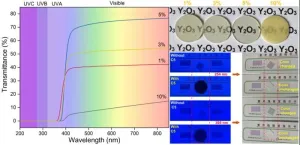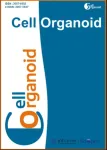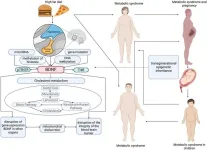Ce-doped yttria transparent ceramic: A new ultraviolet-shielding material for extreme conditions
2024-07-30
(Press-News.org) Ultraviolet (UV) radiation can break most of the chemical bonds in organic matter, and prolonged exposure to ultraviolet light can cause significant harm to humans and objects. In response, UV-shielding materials have been developed to fulfill various commercial requirements, including UV-shielding windows, food containers, contact lenses, and masks. While existing UV shielding materials are suitable for daily use, their effectiveness diminishes in high-temperature, high-pressure, corrosive, and radioactive environments. Organics fail at high temperatures, and films or coatings tend to flake under harsh conditions; glass is constrained by its inherent mechanical brittleness. In response, researchers are actively engaged in the development of UV-shielding materials with high melting points, robust mechanical strength, optimal optical properties, and long-term physical and chemical stability to withstand diverse extreme conditions, including aerospace, high temperature, and acidic and alkaline environments.
To address these problems, a research team from Sichuan University has developed a new UV-shielding material: Ce-doped yttria transparent ceramic. Transparent ceramics are polycrystalline materials with optical transparency that are formed by pressing and sintering. In contrast to traditional UV-shielding materials such as resin and glass, transparent ceramics typically exhibit superior chemical stability and enhanced thermomechanical properties, including thermal-shock resistance, toughness, strength, and thermal conductivity. They subjected cerium dioxide and yttria raw materials to a series of preparation processes to obtain Ce-doped yttria transparent ceramic. Cerium dioxide serves not only as a UV absorber but also as an effective sintering aid for yttria transparent ceramics. Due to the absorption in the visible region of tetravalent cerium, the UV cutoff edge of the yttria ceramic shifted from 250 nm to 375 nm. This shift grants UV shielding capabilities to yttria transparent ceramics, resulting in 100% shielding for UVC and UVB and approximately 95% shielding for UVA.
The team published their work in Journal of Advanced Ceramics on July 24, 2024.
Their results indicate that Ce-doped yttria transparent ceramics exhibit excellent mechanical and thermal properties. Additionally, the optical quality of Ce-doped yttria transparent ceramics remains stable even after prolonged exposure to harsh environments, including acidic and alkaline conditions, UV radiation, and high temperatures. Compared to traditional UV-shielding materials such as coatings, films, polymers, and glass, these UV-shielding transparent ceramics offer superior stability and longevity. Consequently, Ce-doped yttria transparent ceramics are highly competitive as UV-shielding materials, particularly in extreme conditions such as space, radiation reactors, and high-temperature environments.
This work was supported by the National Natural Science Foundation of China (Nos. U21A20441 and U22B2070).
About the Authors
Dr. Jianqi Qi is a professor in the College of Physics, Sichuan University. He received his BSc degree in Physics from Sichuan University in 2004. He received his Ph. D degree in condensed matter physics from Sichuan University in 2009. He was a visiting scholar at the University of California, Davis from 2013 to 2014. His research focused on the service performance of materials under extreme conditions (high temperature, high pressure, strong impact and radiation environment, etc.)
Mr. Cong Zhang is a Ph.D. candidate at the College of Physics, Sichuan University. His research focuses on developing transparent ceramics for radiation detection and shielding.
About Journal of Advanced Ceramics
Journal of Advanced Ceramics (JAC) is an international academic journal that presents the state-of-the-art results of theoretical and experimental studies on the processing, structure, and properties of advanced ceramics and ceramic-based composites. JAC is Fully Open Access, monthly published by Tsinghua University Press, and exclusively available via SciOpen. JAC’s 2023 IF is 18.6, ranking in Top 1 (1/31, Q1) among all journals in “Materials Science, Ceramics” category, and its 2023 CiteScore is 21.0 (top 5%) in Scopus database. ResearchGate homepage: https://www.researchgate.net/journal/Journal-of-Advanced-Ceramics-2227-8508
About SciOpen
SciOpen is an open access resource of scientific and technical content published by Tsinghua University Press and its publishing partners. SciOpen provides end-to-end services across manuscript submission, peer review, content hosting, analytics, identity management, and expert advice to ensure each journal’s development. By digitalizing the publishing process, SciOpen widens the reach, deepens the impact, and accelerates the exchange of ideas.
END
[Attachments] See images for this press release:

ELSE PRESS RELEASES FROM THIS DATE:
2024-07-30
Organoid technology began with Professor Hans Clevers' 2009 breakthrough in cultivating the first intestinal organoid from mice. Since then, the field has expanded exponentially, showcasing organoids' remarkable capabilities in replicating human organ physiology and pathology. Organoids, which are three-dimensional stem cell cultures, offer powerful tools for studying organ development, modeling diseases, and facilitating drug discovery. Their ability to maintain genetic diversity and mimic complex biological processes makes them invaluable in biomedical ...
2024-07-30
WASHINGTON—The Endocrine Society, the world’s oldest and largest organization of scientists devoted to hormone research and physicians who care for people with hormone-related conditions, announced it is merging with the Association of Program Directors in Endocrinology, Diabetes and Metabolism (APDEM).
APDEM represents the academic leaders of more than 135 training programs that prepare fellows for clinical and research careers in endocrinology and metabolism.
“The Endocrine Society and APDEM share a commitment to ...
2024-07-30
(Toronto, July 30, 2024) JMIR Publications, a leading publisher in digital health research, announces the launch of JMIR XR and Spatial Computing, a cutting-edge journal dedicated to exploring the transformative potential of extended reality (XR) and spatial computing technologies in clinical practice.
This new journal arrives at a pivotal moment when recent advancements in artificial intelligence (AI), graphical processing, display technology, and network connectivity are propelling XR and spatial ...
2024-07-30
Metabolic syndrome (MetS) is a multifaceted disorder that impacts approximately 20–25% of the global population. This syndrome encompasses a range of conditions, including obesity, type 2 diabetes mellitus, hyperinsulinemia, insulin resistance (IR), hypercholesterolemia, nonalcoholic fatty liver disease, nonalcoholic steatohepatitis, and systemic metabolic inflammation. These conditions collectively lead to severe diseases and increased premature mortality. The hypothalamus, a critical brain structure regulating ...
2024-07-30
SAN ANTONIO — July 30, 2024 — Dr. James Oxley, an Institute scientist at Southwest Research Institute’s Chemistry and Chemical Engineering Division, has been named a Fellow by the Controlled Release Society. Recognized for excellence and innovation in delivery science, Oxley is an expert in microencapsulation, nanoencapsulation and other controlled-release technologies used in energy, food, pharmaceutical, cosmetic and consumer product applications.
“I’m honored and humbled by this recognition,” said Oxley, who began his Institute career in 2004. “Encapsulation research ...
2024-07-30
University of Virginia School of Medicine researchers have identified a potential treatment for the respiratory symptoms of long COVID after discovering an unknown cause of the condition inside the lungs.
The UVA researchers, led by Jie Sun, PhD, found that COVID-19 infection can cause sweeping changes in immune cells inside the lung tissues, promoting scarring and driving ongoing inflammation even after the initial infection has passed. This ongoing inflammation, they believe, drives the lasting respiratory symptoms, such as cough and difficulty breathing, associated with long COVID.
The new research from Sun and ...
2024-07-30
BEER-SHEVA, Israel, July 30, 2024 – Antibiotic resistant bacterial pathogens are on the rise, while fewer antibiotics are being developed. Prof. Ariel Kushmaro and his local and international colleagues tackled the need by focusing on the long pepper. Known in traditional medicine for its treatment of a variety of illnesses, the team created a derivative that disrupts bacterial chemical communication.
Their findings were just published in Biofilm (https://doi.org/10.1016/j.bioflm.2024.100215).
Many plants' secondary metabolites are essential ...
2024-07-30
By Benjamin Boettner
(BOSTON) — Since the 1950s, researchers have used a famous method invented by Wallace Coulter known as “flow cytometry” to characterize different types of immune cells in research studies and in blood samples from human individuals. This has enabled a much deeper understanding of immune cell development as well as new ways to assess human health and diagnose various blood cancers. Later, flow cytometry was applied also to other cell types.
In traditional flow cytometry, cell surface and intracellular proteins are detected with antibody molecules that are linked to fluorescent probes. However, while providing single-cell ...
2024-07-30
Not all police misconduct is the same. Misconduct can range from offenses like homicide and sexual assault to seemingly minor infractions such as accepting free coffee from the public. Exactly what qualifies as police misconduct varies locally, and the response to this behavior is typically handled internally by law enforcement.
The absence of a commonly accepted framework to assess and interpret police misconduct remains a complex and contentious issue. Moreover, progress in researching this area is hindered by the limited ...
2024-07-30
Genetically engineered human skin bacteria can make mice less attractive to mosquitoes for 11 days. Mosquitoes transmit a host of deadly diseases, including malaria, West Nile, dengue, yellow fever, and Zika. Female mosquitoes on the hunt for a blood meal tune into scents released by skin microbes that live on their targets. Omar Akbari and colleagues engineered versions of the common human skin commensals Staphylococcus epidermidis and Corynebacterium amycolatum to produce much less of a form of lactic acid known to attract mosquitoes. The authors tested the microbes alone and found the engineered version of S. epidermidis attracted about half as ...
LAST 30 PRESS RELEASES:
[Press-News.org] Ce-doped yttria transparent ceramic: A new ultraviolet-shielding material for extreme conditions







